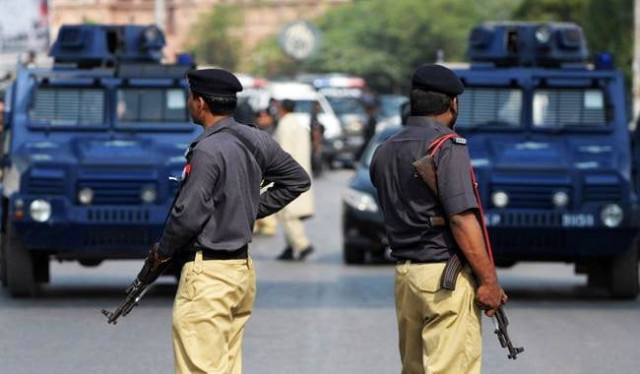Sharae Faisal 'encounter': Anti-terrorism clause to be added in FIR against Sindh police officials
Sindh Police decide to not release CCTV footage of the incident

Sindh Police decide to not release CCTV footage of the incident. PHOTO: FILE
After viewing a two-minute and 30-second long closed-circuit television (CCTV) footage of the incident, officials in the Sindh Police have decided to add Section 7 of the Anti-Terrorism Act (ATA) in the complaint. The move comes a week after the victim’s father made a public demand for the accused to be arrested again and tried under Section 7 of the Anti-Terrorism Act (ATA).
The request by the victim’s father to release the footage, however, has been dismissed.
Speaking to The Express Tribune, rights activist and lawyer Jibran Nasir maintained that Section 7 had to be added to the fir due to the nature of the case. Responding to Sindh Police’s decision to not release the footage, he recalled that the prosecutor had also refused to make it part of the case file.
Dwelling further he claimed the accused officers had designed a strategy to stage a fake encounter to become “super cops”, he added that Ali, Babar, Ibrahim and Maqsood were all innocents since the footage showed that a policemen shot Maqsood under the pretext of an encounter. The activist said the entire police station was privy to the fact because hindrance during the filing of the report.
Referring to Home Minister Sohail Anwar Siyal’s visit to the deceased’s family home, Nasir said the Pakistan Peoples Party (PPP) leader had not followed through on his commitment despite sending a letter to the office of home minister.
The letter, a copy of which is available with The Express Tribune, urges the government to place police officials involved in the encounter, namely ASI Tariq Khan, Constable Akber Khan and Constable Abdul Waheed, on the Exit Control List (ECL). It further highlights that two unidentified civilians who were part of the team were still at large hence a threat to the family of Maqsood.
Sharae Faisal 'encounter': Man demands police officials be re-arrested for killing his son
The ‘fake’ encounter
On January 20, the 27-year-old was shot dead near the Pakistan Air Force base on Sharae Faisal. He was a tailor by profession. The police party, which had encountered Maqsood, claimed that he was a criminal and was killed during a shoot-out.
However, a few hours later, the police authorities retracted their initial statement and issued another statement claiming that an ‘innocent’ citizen was killed in an exchange of fire between a suspect and the police.
They claimed that two suspects, Ali and Babar, had been arrested in injured condition while their accomplice, Ibrahim, had managed to escape in the encounter. According to the police, the suspects arrested were involved in several cases of mobile phone snatching and they targeted people coming from the Karachi airport. Later, Babar died of his injuries.
Murder case registered against four police officials
CCTV footage says otherwise
During a press conference on March 27, rights activist and lawyer Jibran Nasir, who claims to have seen the CCTV footage of the incident, had said the footage showed that a policeman was shooting Maqsood under the pretext of an encounter.
“A police mobile was following a rickshaw, which overturned after the police opened indiscriminate fire. Later, the policemen, especially ASI Tariq, took the suspected criminals [who were travelling in the vehicle] onto the footpath and shot them,” Nasir told reporters. He added that the ASI later turned back to the rickshaw and shot Maqsood multiple times at close range, who was still in the vehicle along with the driver and another man.


















COMMENTS
Comments are moderated and generally will be posted if they are on-topic and not abusive.
For more information, please see our Comments FAQ